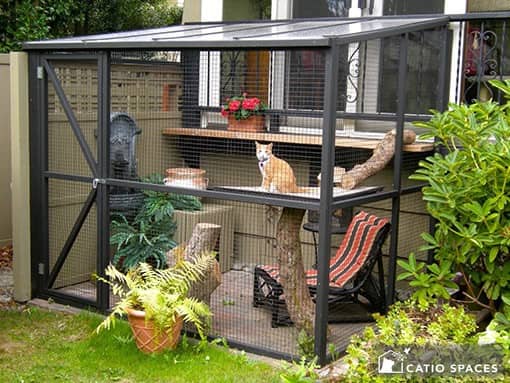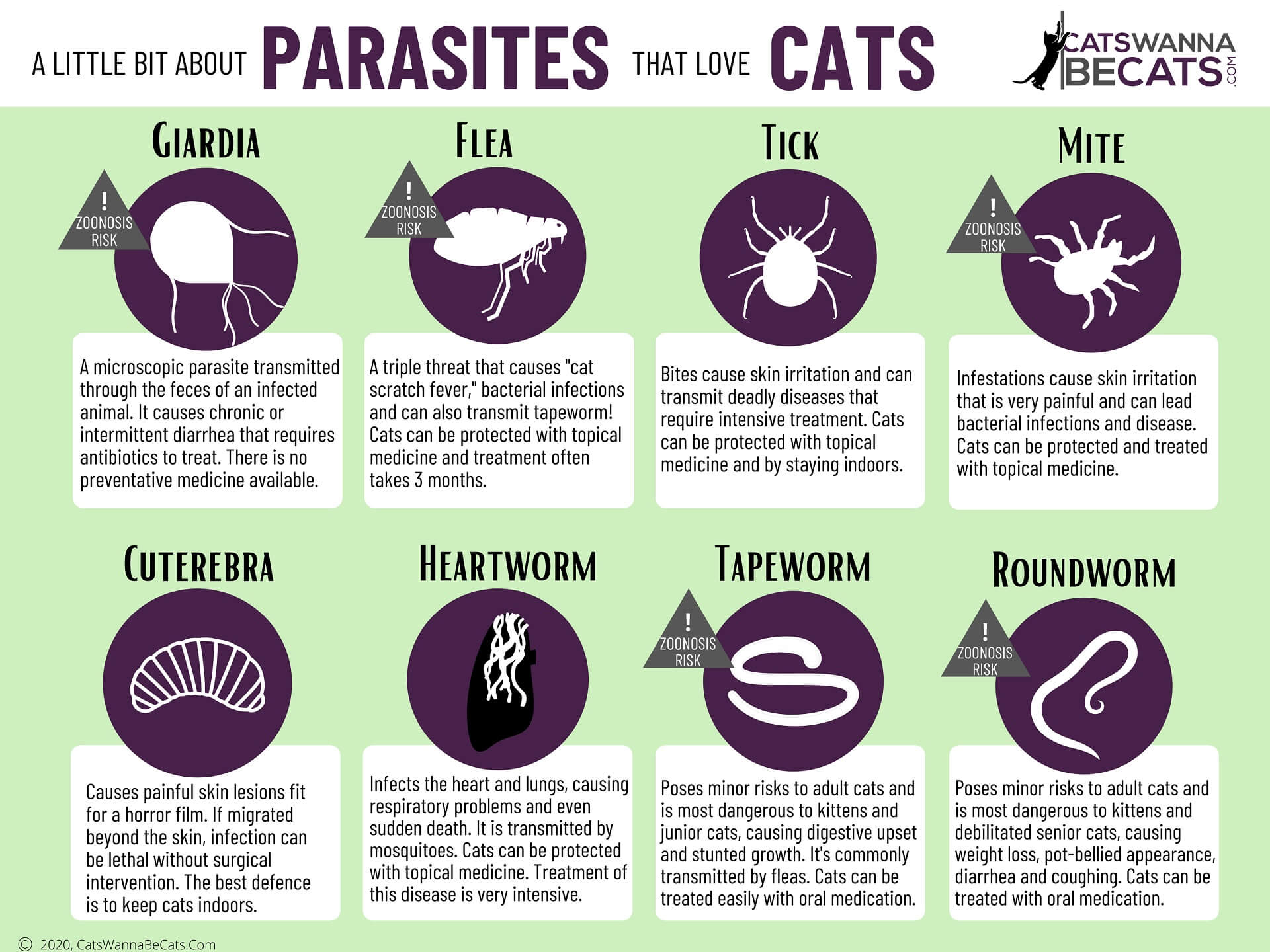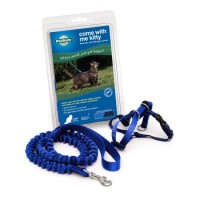Select a topic to learn more
Cats Should Experience the Great Outdoors…Supervised!
Supervision outdoors = safety from and for wildlife
The average lifespan of unsupervised outdoor and indoor-outdoor cats is only  2-5 years, depending on where you live and sheer luck. The dangers of getting lost or hit by a car are at the forefront of most people’s minds, but how about wildlife? Wildlife is as dangerous to cats as cats are to wildlife. In fact, cats roaming outdoors, whether full-time or part-time, are the single biggest threat to urban bird populations, putting some species at risk for extinction. To learn more about the impact outdoor cats have on birds, visit www.catsandbirds.ca.
2-5 years, depending on where you live and sheer luck. The dangers of getting lost or hit by a car are at the forefront of most people’s minds, but how about wildlife? Wildlife is as dangerous to cats as cats are to wildlife. In fact, cats roaming outdoors, whether full-time or part-time, are the single biggest threat to urban bird populations, putting some species at risk for extinction. To learn more about the impact outdoor cats have on birds, visit www.catsandbirds.ca.
Wildlife is equally a major threat to the lifespans of cats, too. This is what you need to know:
Rodenticides take 2-3 days to kill their targets. If someone nearby is using it, an outdoor cat is also at risk. The odds of toxicosis in a cat from secondary ingestion are generally low, depending on the poison and the size of the rodent. But consider this: rodents that have ingested the bait become easy prey for outdoor cats who make 10 to 20 kills per day. Now those odds look quite a bit worse.

Direct and indirect disease and parasite transmission from wildlife to cats is common. The most obvious and deadly is rabies. Another is leptospirosis, a serious bacterial disease transmitted through the urine of infected animals. Pests and parasites transmitted through wildlife include roundworm, giardia, ticks, mites, and fleas. More information on parasites affecting cats is coming up.
When outdoors, cats are in danger of injury or consumption by other animals such as coyotes, foxes, raccoons, opossums and even squirrels (those guys are feisty!) As our urban communities continue to grow outward, wild animals are braving neighborhoods for survival, making seemingly safe areas more dangerous to cats.
Harness Training Tips
Harness training your cat is a fantastic way to bond with him and provide him with supervised outdoor exploration. It can be frustrating, though, when our cats don’t quite catch on as quickly as dogs do and many cat parents give up before really trying. Cats are smart – you know this! Whether 4 months old or, like Blue at 9 years old, cats can learn new things if we go about teaching them on their terms (cats: they own us).
Some tips from Blue’s Mom:
Find a harness that fits well and is comfortable yet secure enough that your cat won’t slip out of it.
- Let your cat get used to the harness just existing nearby. Don’t try to put it on him the first time he sees it.
- Wait for the right time to try the harness on your cat. If he’s sleeping, eating or stressed about something, he won’t have a positive experience with it going on. Try it when he’s awake, relaxed and has a good catnip buzz going on.
- Reward him with treats and head scratches when you put the harness on him the first few times. It will help to make the experience a positive one! If he doesn’t mind it, let him relax with it on to get extra comfy wearing it.
- Start walking with him inside your home and wait until he’s comfortable enough with the process before heading outdoors. Keep treats with you to entice him to move along with you and praise his good work with more treats. Blue’s Mom plans practice sessions around his meal time because he is so food-motivated and he will do anything to get that dish of deliciousness from her hand!
- If your cat isn’t ready to walk with you, be patient. Don’t give up and definitely don’t pull or drag him. Keep the whole experience a positive one and the two of you will be walking side by side soon!

Catios
Catios are what they sound like, a cat patio. They are the ultimate way to let your cat freely experience the outdoors. They can be made in infinite shapes and sizes depending on your preferences, home and property. There is a misconception that catios are too expensive to purchase or too difficult to build. And what about rented homes or high-rise apartments? Where there’s a will there’s a way! Catios come pre-designed or custom-to-order and shipped in a format that is easy to assemble. If you want to save a few dollars, there are downloadable instructions on how to make your own (see Wallace’s Top Picks for this section).
Just imagine being able to open the window for your cat to run through a long tunnel into her own backyard paradise! Or opening your backdoor to a shared sanctuary where you can read a book next to your cat as she bathes in the warm sunlight. Have a small apartment in a high-rise with balcony access? If you’re lucky, your landlord may let you convert the whole balcony into a catio. Otherwise, something like a multi-level cage on wheels could do just the trick (and fold up for storage when your cat comes back inside). Our Content Editor, Lisa, uses the Amazon Basics Large 3-Tier Cat Cage (for balconies) so her cat, Smokey, can safely get some fresh air in Toronto. For safety, it’s easy to move so Smokey can go in before being wheeled to the balcony. When she’s all done, she wheels back in, gets out, and Lisa folds the catio up for easy storage.
Always Use Protection
Parasites are real buggers (pun intended)! Some of them even transmit other parasites – ugh!  For your and your cat’s health and safety, it’s important to protect both him and yourself (since some parasites are zoonotic, which means they can be transmitted from animals to humans).
For your and your cat’s health and safety, it’s important to protect both him and yourself (since some parasites are zoonotic, which means they can be transmitted from animals to humans).
There are a variety of products on the market that are over-the-counter and prescription, and choosing the right one depends on where you live, the time of year, and your cat’s overall health. Indoor-only cats are as much at risk as indoor-outdoor cats because any of these parasites can be brought into the home as easily as clinging to the human’s shoe or jacket or finding an opportunity to hop in when the door is left open. Mosquitoes, who carry a deadly parasite known as heartworm, are notorious for bothering us inside our homes!
Your veterinarian can guide you in choosing the best product to protect your cat. There are special considerations to be made for young kittens and seniors, as well as allergies and medical conditions. If your cat has already been exposed to a parasite, special lab testing may be required to determine the specific species and life stages present to successfully treat the problem. In some cases, there are consequential symptoms to treat as well, most commonly bacterial infections, diarrhea and dermatitis.








 Start with a huge, uncovered box, or even a kiddie pool, and fill with a thick layer (about 6 inches) of unscented clay or fine sand-like particulate clumping/scoopable litter. For Ollie, you may need to play around with the substrate types to make it more natural. Try using soil or peat.
Start with a huge, uncovered box, or even a kiddie pool, and fill with a thick layer (about 6 inches) of unscented clay or fine sand-like particulate clumping/scoopable litter. For Ollie, you may need to play around with the substrate types to make it more natural. Try using soil or peat.